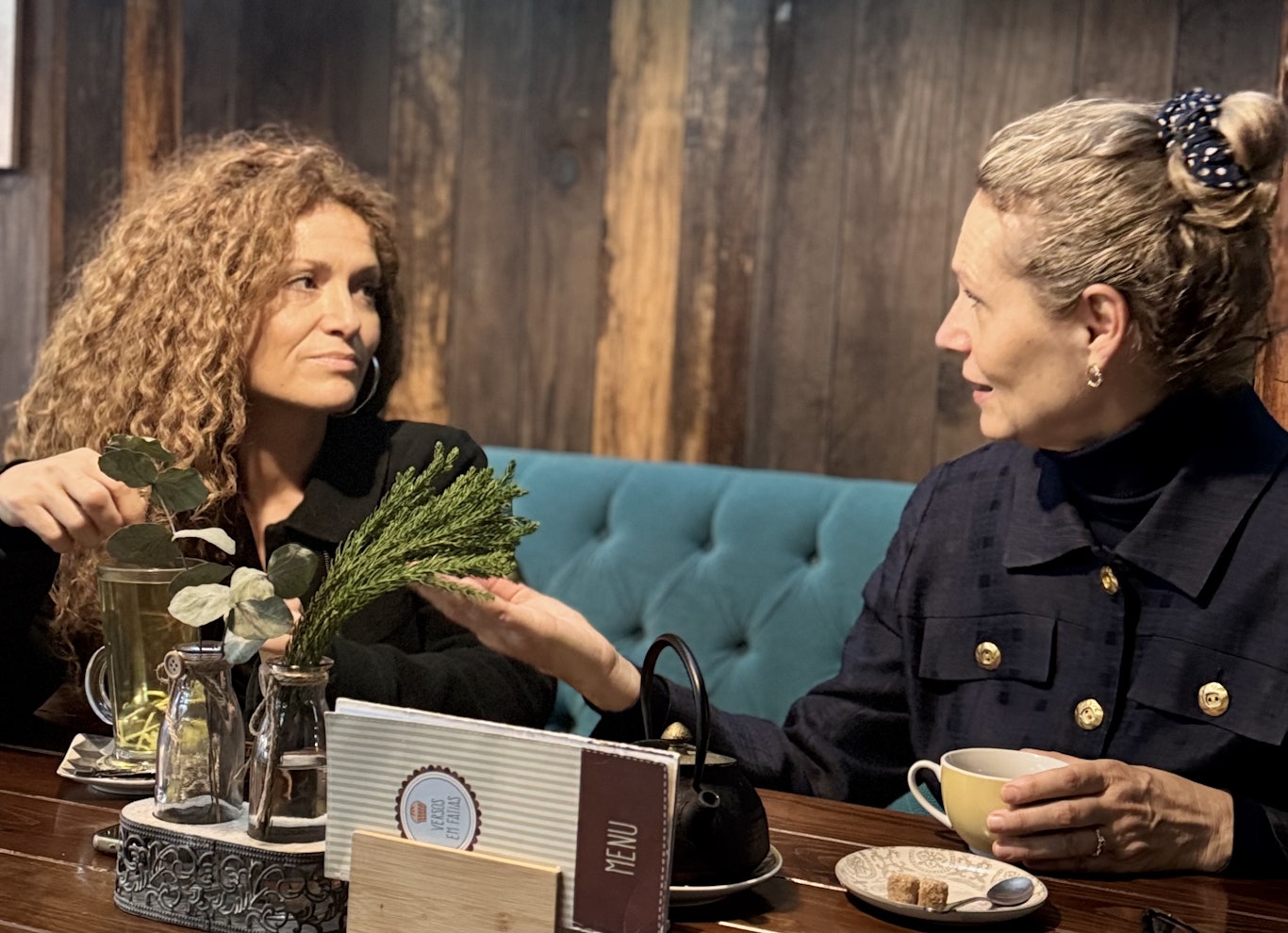
© Susanne Barta
Ich treffe Helena Anfang Januar 2025 in einem kleinen Café in Porto. Es ist nicht das erste Mal, dass wir miteinander plaudern. Kennengelernt habe ich sie und ihr spannendes Projekt Vintage for a Cause auf der GREENSTYLE in München vor der Pandemie. Helena hat Vintage for a Cause als Social Enterprise 2013 gegründet, Schritt für Schritt ist zum sozialen Anliegen auch ein nachhaltiges, zirkuläres hinzugekommen. „Als ich begonnen habe, war der Begriff nachhaltige Mode noch nicht so sehr in meinem Bewusstsein, aber ich bin mit upgecycelten Kleidungsstücken aufgewachsen, meine Mutter ist Schneiderin, und wir haben immer upgecycelte Kleidung getragen.“ Helena hat Jura studiert, später auch Social Innovation und Entrepreneurship. Für ihre Abschlussarbeit suchte sie nach einem passenden Projekt. Daraus wurde dann Vintage for a Cause. Sie wohnte damals im Stadtzentrum von Porto, in einem Haus, wo einige ältere Frauen alleine und ziemlich isoliert lebten. Helenas Idee, diese Frauen mit Designern zusammenzubringen und aus ihren kaum bis nicht getragenen Kleidungsstücken etwas zu machen und ihnen so, aber auch ihren Kleidungsstücken, einen neuen Sinn zu geben, stellte sich schon bald als zukunftsweisend heraus. „Das Ziel war damals nicht eine Fashion Brand, sondern eine Upcycling Brand zu starten, dabei an etwas anzuknüpfen, das ich kannte, gleichzeitig die Isolation dieser Frauen zu verbessern oder sogar grundlegend zu verändern“, erzählt Helena.
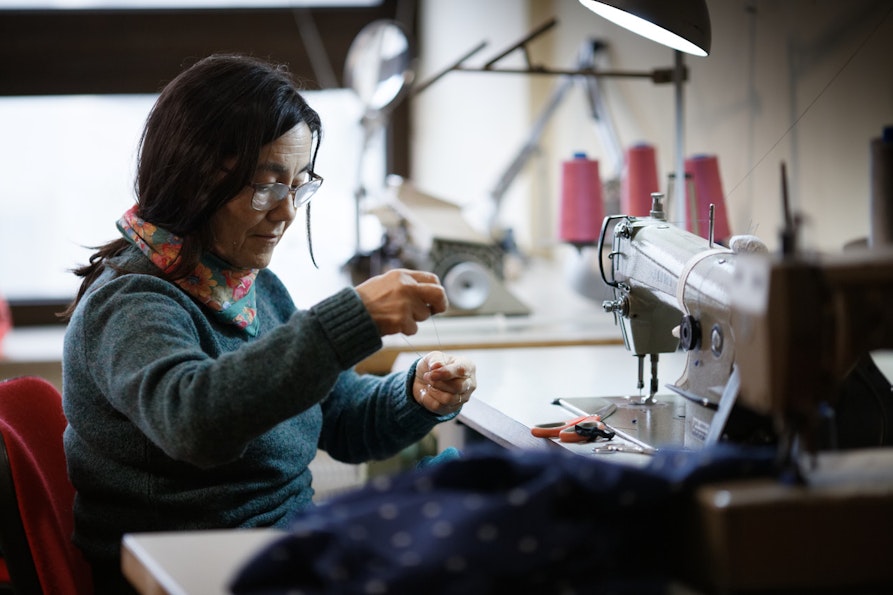
Issues like textile waste and sustainable materials came to me later. A few years after we started Vintage for a Cause, we started contacting textile companies and began to understand that we were not only solving social problems. The system of over-consumption and over-production, which tends to take the value out of clothes, also takes the value out of women after a certain age.
Eleven years later, where is Vintage for a Cause now?
We still have programs that empower women, and at this point we already have a methodology that works and makes these women feel more valued and gives them tools to create their own employment so they can work for us. We pay them to make our clothes. In the beginning we were upcycling post-consumer clothes, now we are more or less upcycling pre-consumer waste. And we try to find out which activities really have an impact on our target group. We have systematized this and created a social inclusion program that we are replicating in different cities. At the same time, we are creating timeless vintage inspired collections that we sell online and that are made by these skilled women who want to work professionally.
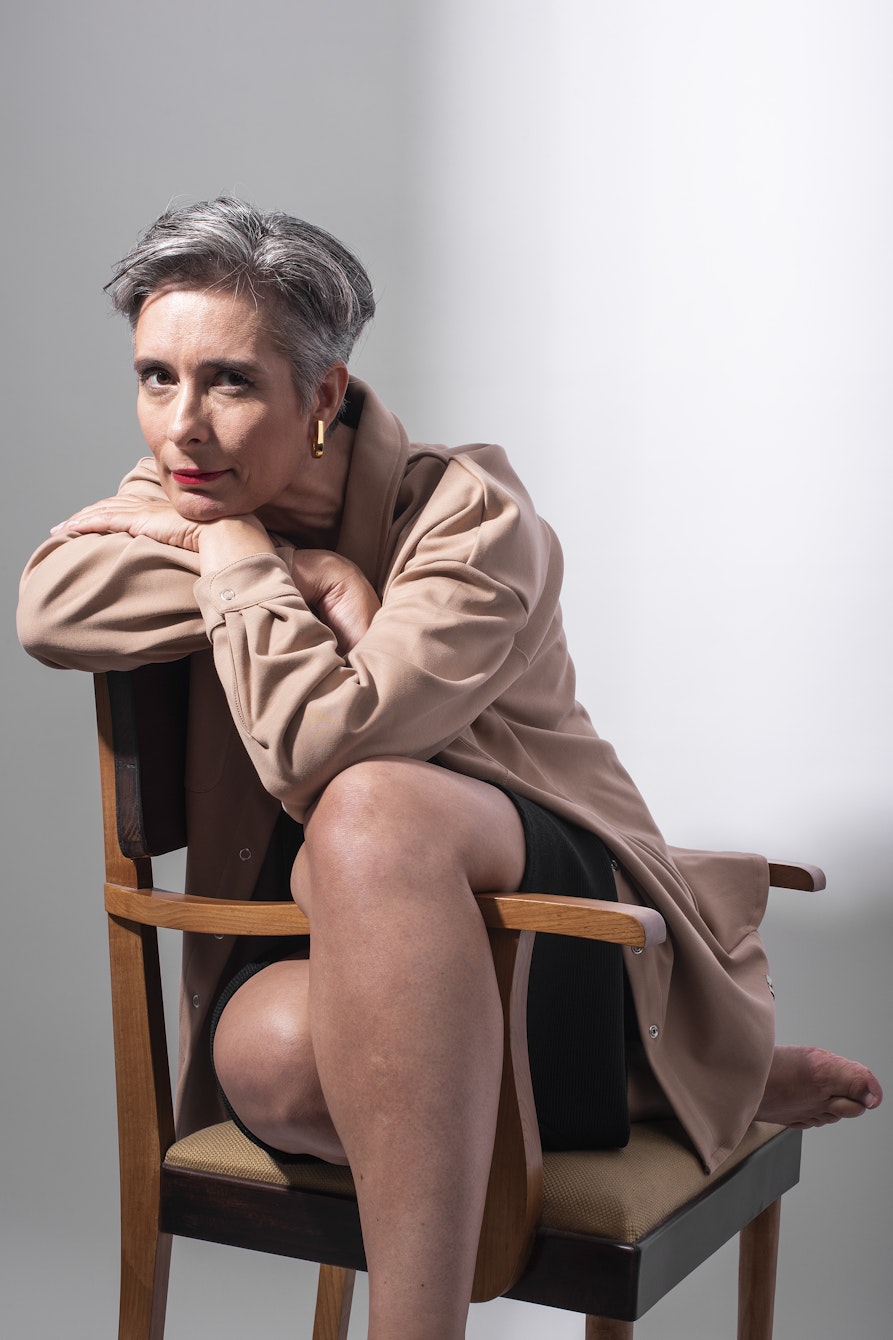
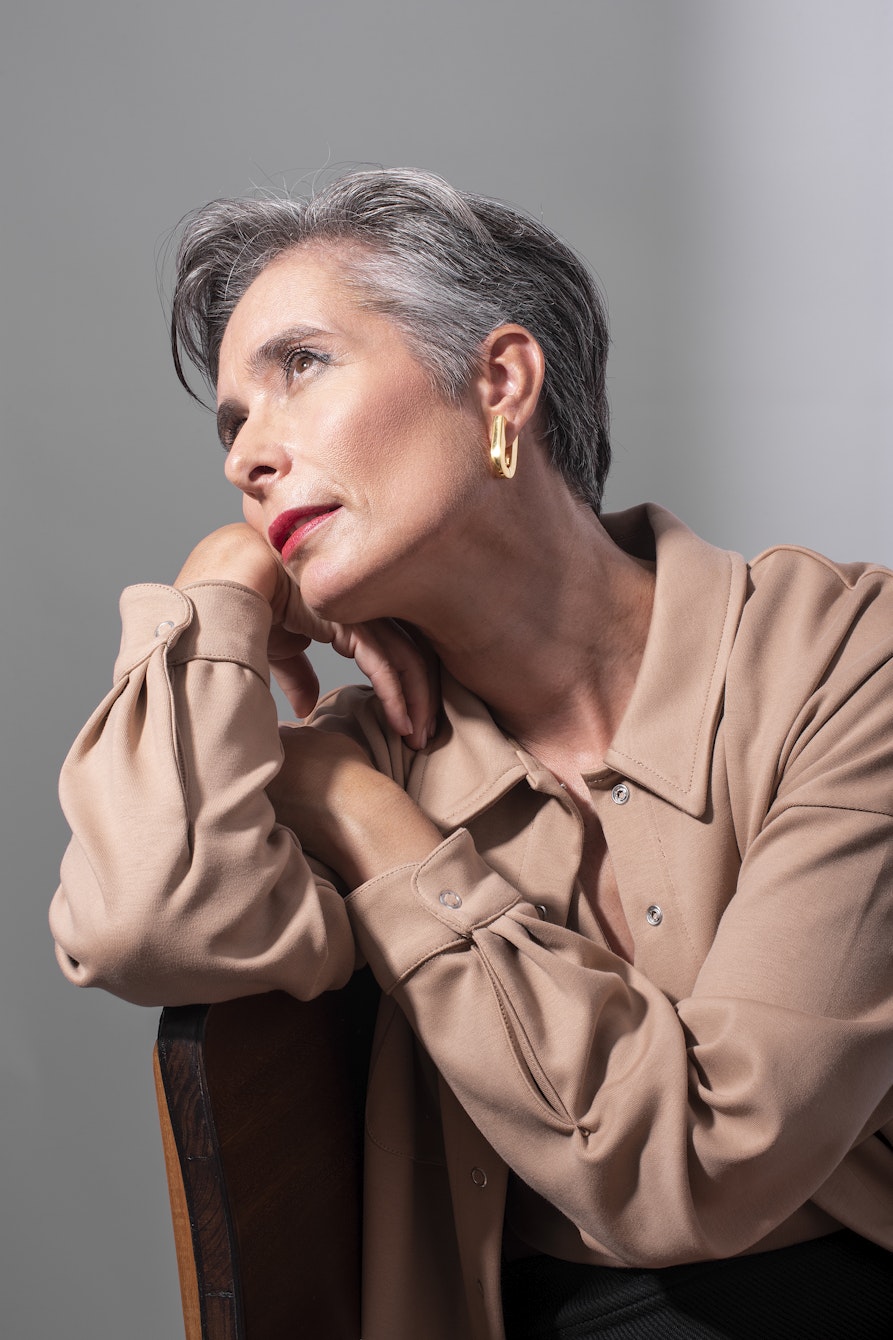
What have you learned over the years?
Our employment system is not in line with our biological timeline. Many women don't want to work 8 hours a day making clothes. We understood that they basically like to work, they like to be creative, but they also want to have time for other things, many have grandchildren, a garden, they want to be able to organize their own time. After 11 years we managed to combine the activities in a way that they fit together. So we do the social integration programs, we get skilled seamstresses to make our clothes that we sell and we get some money to maintain the social integration program.
Do you also share your experience and your method?
We also sell our know-how, the social inclusion program, to municipalities and the government for implementation. And also to train their people. Active aging models are very important for them. There is a great demand for these workshops, also for young women. Our know-how can be used in many ways, especially in the area of repair. Recycling should be the last thing in a systemic way. Repairing, mending should come first. It's about postponing the end of clothes. So we are also training younger women to support solutions in mending and repairing.
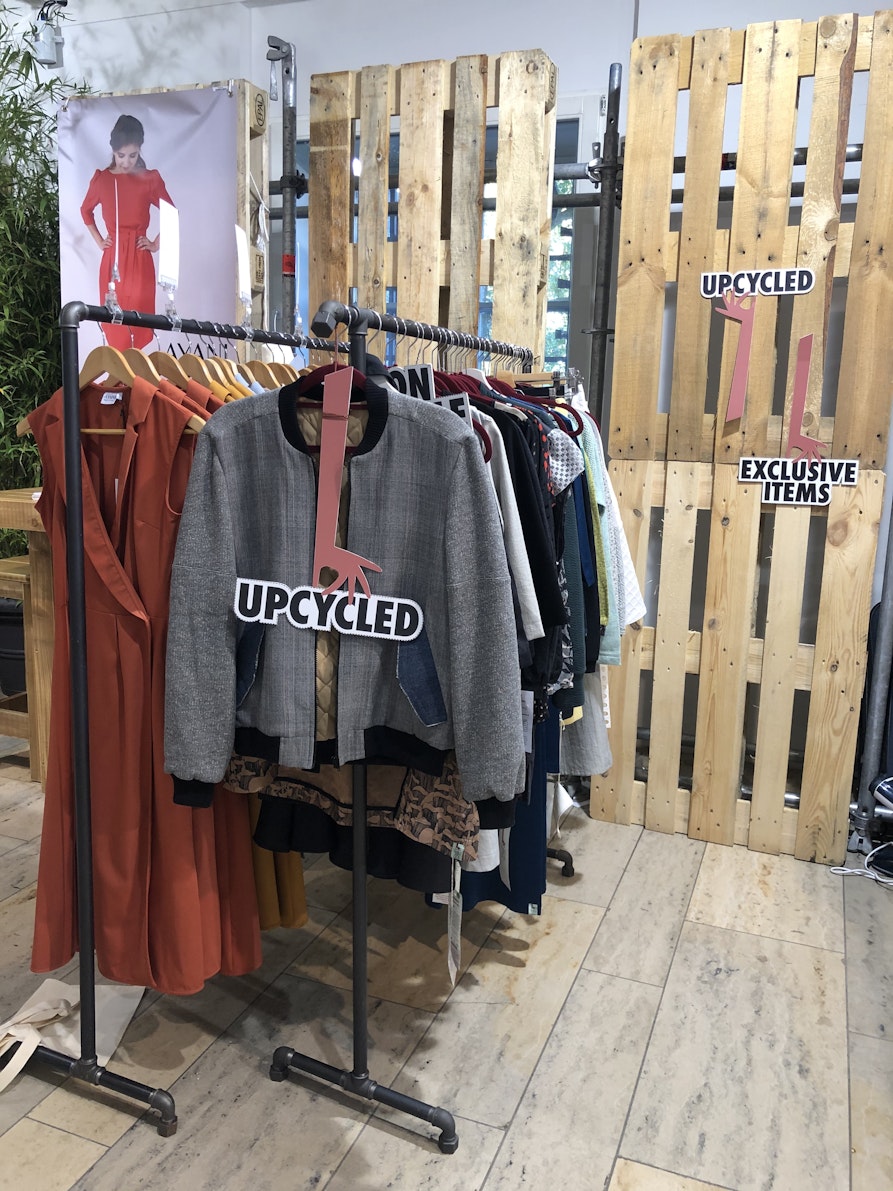
Is Portugal your main focus?
We have an online shop and try to attend some trade shows that target our ideal customer. Before Covid we participated in Neonyt and GREENSTYLE, but after the pandemic we had to change our strategies. We don't go to international fairs any more, a lot of our international clients went out of business. We now focus more on Portugal, on textile companies and partnerships with influencers who share our message. We also attend some fairs in Portugal.
Is vintage, secondhand, recycled clothing a thing in Portugal?
I would say that the last three years make us think so. There are a lot of new secondhand stores and with online platforms it started to be a more normal thing. But what I think is that secondhand is not changing the behavior that causes textile waste. People are buying a lot of secondhand now, but it's not solving the problem, it's just delaying it. Especially younger target groups are very interested in secondhand, but in a not so healthy way I would say. So there is still a lot to do. Vintage is much better. Secondhand stores have a lot of junk.
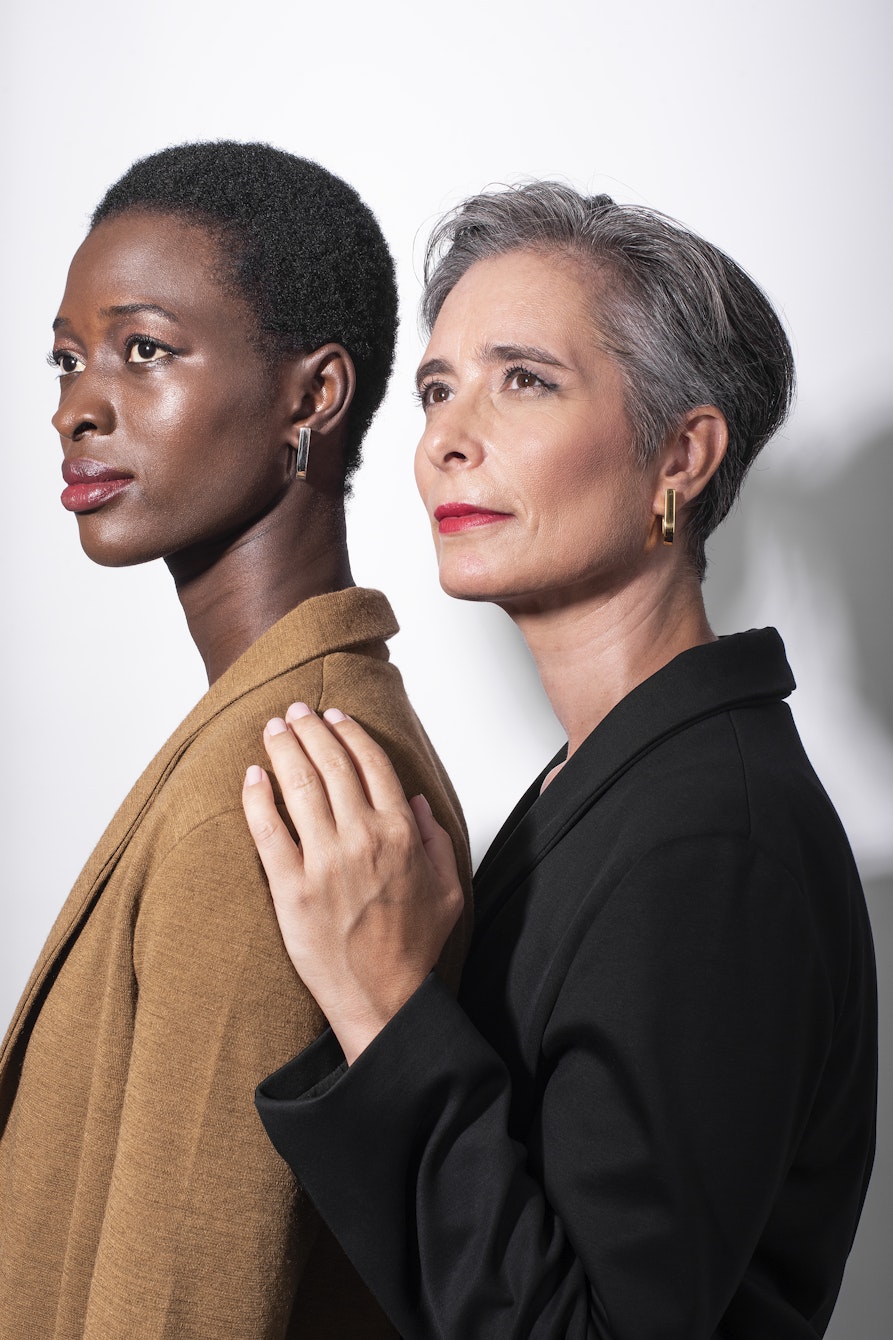
What are your plans for the future?
I have always envisioned Vintage for a Cause as a collaborative platform for upcyclers that not only reduces textile waste, but also creates more opportunities for women and designers. We are taking steps to make that a reality. By replicating and creating as many sewing clubs as possible, by implementing our methodology in different regions, and also by going digital. We need a management tool that brings together all our stakeholders. The idea is to let go a little bit of the ownership of the project in order to have the maximum impact.
Especially with the new EU directives, where companies need solutions on how to deal with their deadstock and what happens to the clothes after the sale, this is very interesting...
Yes, and it will be interesting to see how companies with huge supply chains approach this. Fast fashion companies produce the maximum amount of clothes for the minimum price. And get people to buy every week or every month. To change that supply chain quickly and start making less clothes probably isn't going to happen. But I think we live in a time where there is not one solution to a problem. Recycling won't solve everything, on the contrary, if recycling is a solution, the same paradigm will continue. So we have to change the paradigm, produce less, consume less. And change the way we produce. If we change it overnight, things will crash, we have to be smart about it. Fashion brands have to find a way to make money without producing so many clothes and exploiting people and the environment. Marketing and media also have a role to play, journalists like you are crucial in spreading the message and getting people to walk a certain way. If marketing has the power to make people buy so much more than they need, it also has the power to make people buy less. So everyone has a role to play, from government to business to media to consumers.
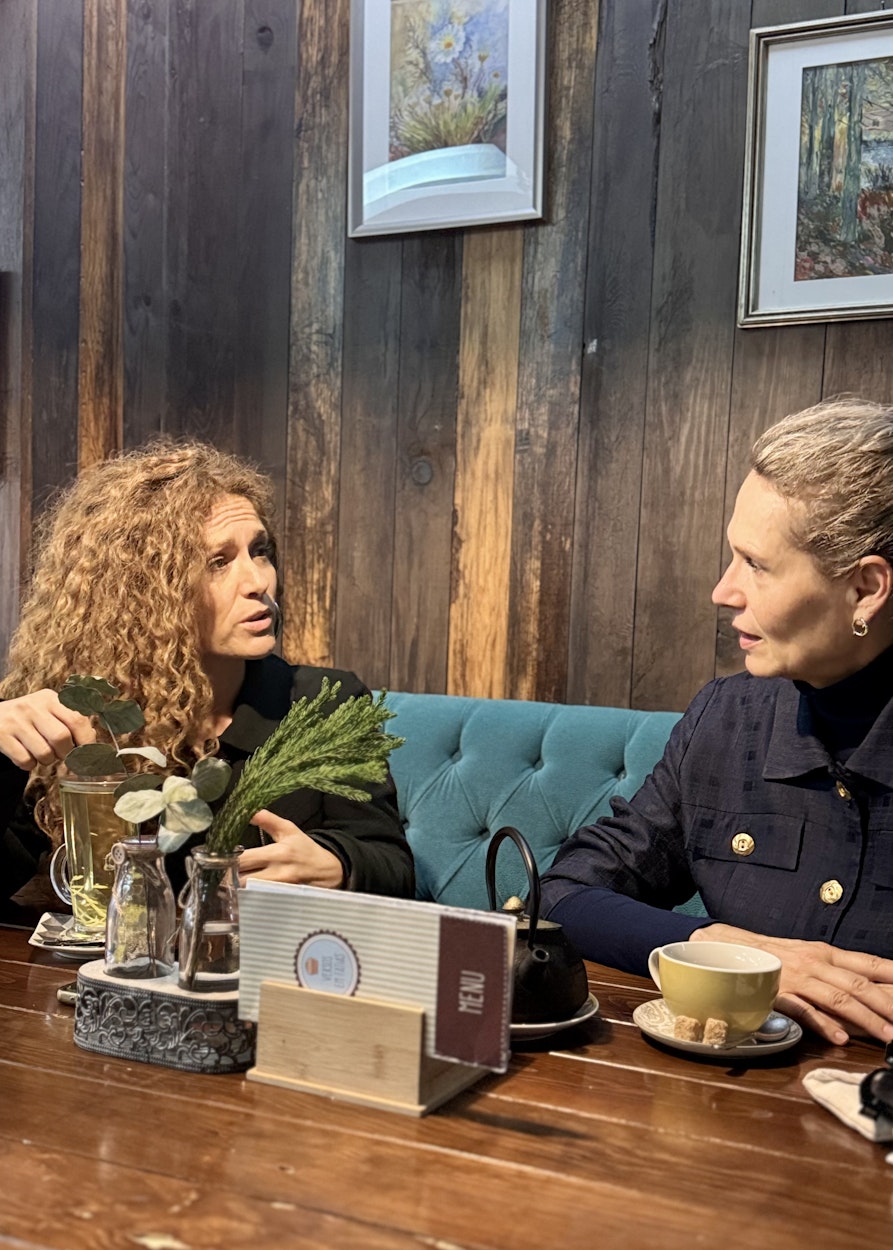
How do you dress?
It's important to me that my clothes are comfortable and durable. Clothes are an expression of our individuality; it is important to feel comfortable in them. When I buy clothes, I try to choose those that seem to be more durable. I don't wear a lot of colors; I tend to choose the same colors all the time. And I like to make my own clothes, but unfortunately, I don't have enough time for that. So for everyday life I choose minimal, simple clothes that are comfortable. But I love clothes. The creative process is really something that everyone should try, because when you are in the field of possibilities, there is something that you feel that is amazing.
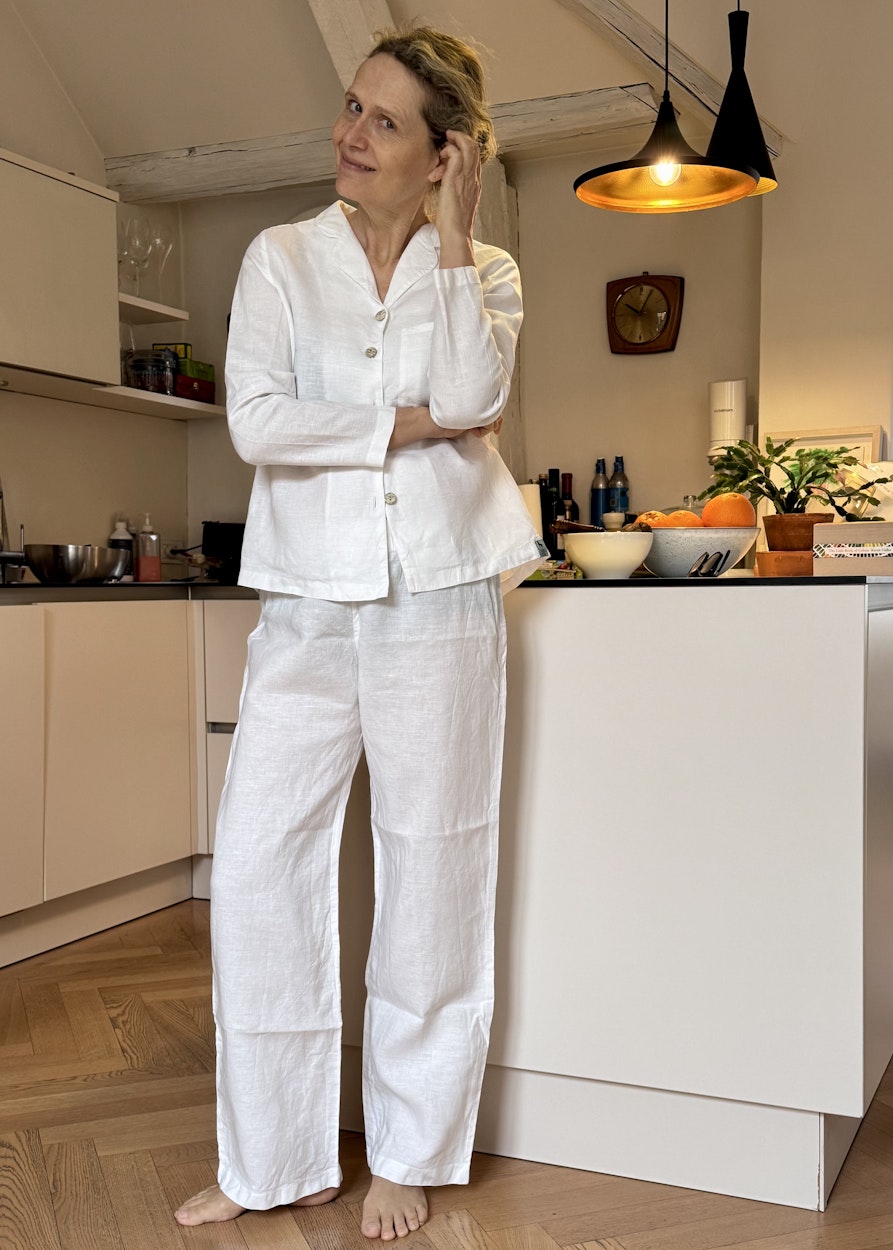
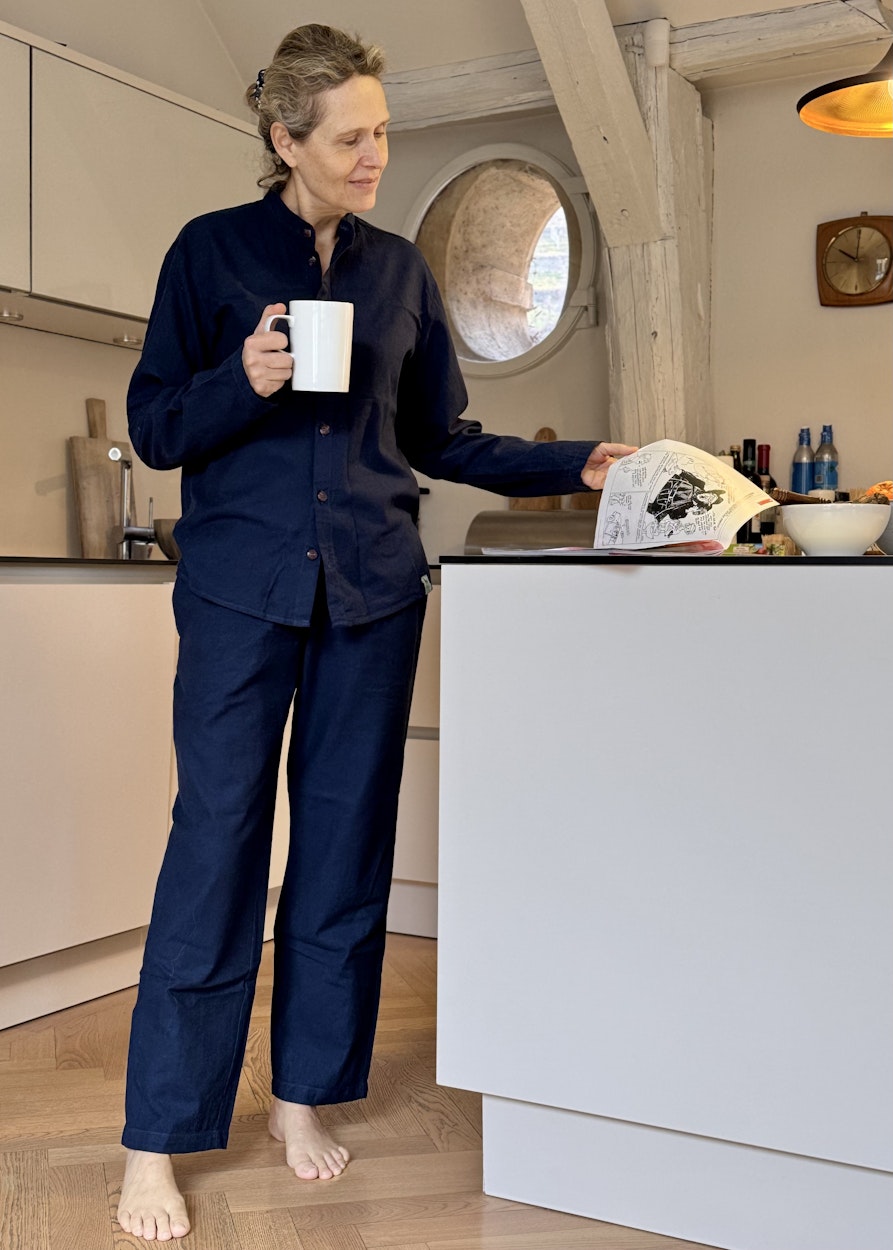
Ich habe mir bei Vintage for a Cause 2 vintage-inspirierte Pyjamas gekauft. War dringend notwendig, meine schleißige Nachtgarderobe etwas aufzufrischen. Der blaue Pyjama ist aus Flanell, der weiße aus Leinen. Wie gesagt, alles aus Deadstock gefertigt. Sie sind wunderschön und SEHR angenehm zu tragen.
Supported by Kauri Store (M), Oscalito (L) und meiner Freundin Kristin. Wenn ihr diesen Blog auch unterstützen möchtet, gibt’s hier alle Infos.